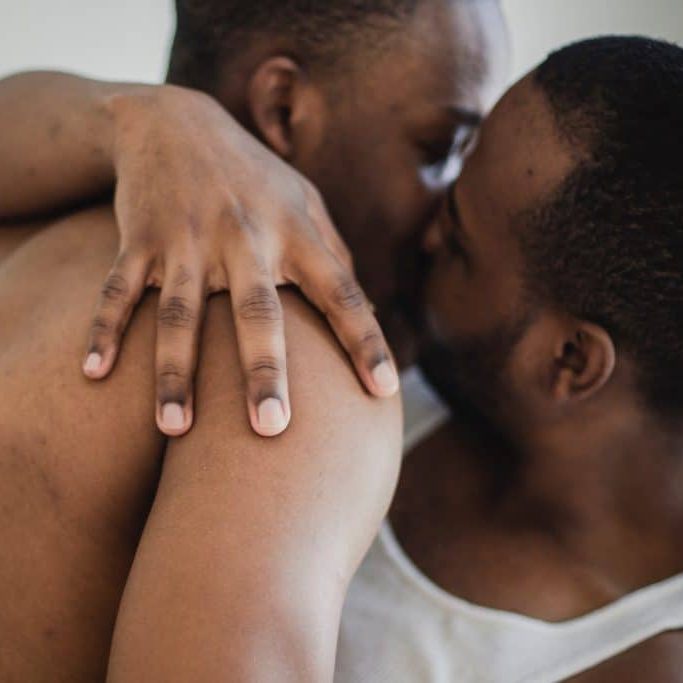
Why gay guys need to get better at conscious consent
Sex is an important part of the gay experience – but conscious consent can often be lacking. Here’s how to change that
How conscious is your consent in gay interactions or environments?
A report by FS Magazine found that 62% of respondents had been touched or groped in a bar or club without express permission, and also highlighted a lack of clarity around consent when it comes to cruising, chemsex, and even in relationships (read more about consent and the gay community)
Consent has rightly moved to the top of the agenda in recent years. But it’s not always clear what we actually mean by consent, and most of us have had very little education around it.
No wonder it can feel slightly daunting!
So here’s a practical look at conscious consent for gay guys, how you experience it, and what you can do to get better at it.
Consent is not just about sex, it’s everywhere
First of all let’s look at some of the bigger picture issues relating to consent.
When we hear the word consent many of us will automatically think of it in the context of sex. That’s how it’s often spoken about in the media, and high-profile movements like #MeToo have focused well-deserved attention there.
But consent is actually something we have to navigate in almost every area of life (if you’ve ever had a demanding boss, or an interfering relative you’ll know what I’m talking about!)
So if you want consent in the bedroom it helps to learn how to have it everywhere else first!
Making assumptions doesn’t make for consent
Whenever there’s an assumed, or unagreed action there’s always a risk that the impact could end up being negative.
If I move your TV out of your house without telling you, or without you allowing it, I’m a thief and you become a victim of a robbery!
If you insist that I move your TV for you, and I do it without really wanting to, you may be suffering from a sense of entitlement, and I may end up feeling taken advantage of.
Being stolen from, or taken advantage of, is never fun.
But think of how many times you may have experienced intimate situations in this way, and ultimately how that made you feel.
Communication is key to consent
Many people (and gay guys are no exception) feel like it’s somehow unsexy to talk much when it comes to sex.
Instead, as a way to communicate our desires, many of us end up doing to our partner or lover what we would actually like them to be doing to us, in the hope that they will somehow magically reciprocate.
But whatever you’re doing to them may well not be at all what they would like done to them, and the risk is that they end up enduring something they don’t really find enjoyable, simply to please you.
So a great way to increase the amount of pleasure you (and your partners) have in your interactions is to start reframing how you think about consent, and more importantly how you communicate around it.
How the Wheel Of Consent can help
Just as we often allow ourselves to go along with something in the mistaken assumption it is consensual, we often misconstrue something we do to another person as something we do for them.
The Wheel Of Consent is a model developed by Dr Betty Martin; it’s at the core of all the work I do, and it offers a different approach to consensual giving and receiving.
One of its key principles is that in any interaction there are 4 elements:
- Somebody giving
- Somebody receiving
- Somebody doing
- Somebody being done to
Most of us tend to assume that giving means we’re doing something.
And that’s true sometimes. If you give me a massage you’re the one doing the action.
But if you run your fingers through my hair because you like the feel of it you’re still the one in action, but this time you’re receiving (in this case receiving the gift of access to my hair).
A broader definition of consent
Very often consent is framed in terms of asking permission – and getting a ‘yes’.
Again, that’s true sometimes (you need to get permission from me before you run your fingers through my hair).
But what about giving me a massage? If it’s something I want, or I’ve asked for, you don’t need my permission to do it.
The Wheel Of Consent offers a broader definition of consent than just permission:
Consent is the agreement between one or more people about what will (or won’t) happen, and – just as importantly – who it is for
Creating consent is not always easy, and we may not always get it right, but building skills to navigate making agreements, which are clear, flexible, and well communicated is an important step towards having more consenting interactions.
Explore more…
Working with me to learn about conscious consent in gay sex and relating involves learning how to understand and feel pleasure, how it feels to inhabit all 4 quadrants of the Wheel Of Consent (Taking, Allowing, Serving, and Accepting), and practicing how to communicate authentically what you do and don’t want.
Get in touch to find out more
If you believe you have experienced consent violations please take a look at the additional resources below
Additional consent resources:
Helping Survivors (USA): https://helpingsurvivors.org/what-consent-looks-like/
Galop the LGBT+ anti-abuse charity (UK): https://galop.org.uk/consent/
Enjoyed reading this?
If you found this page useful you can get more tips and resources straight to your inbox. Sign up here and get my free Touching For Pleasure guided practice to start you off:





